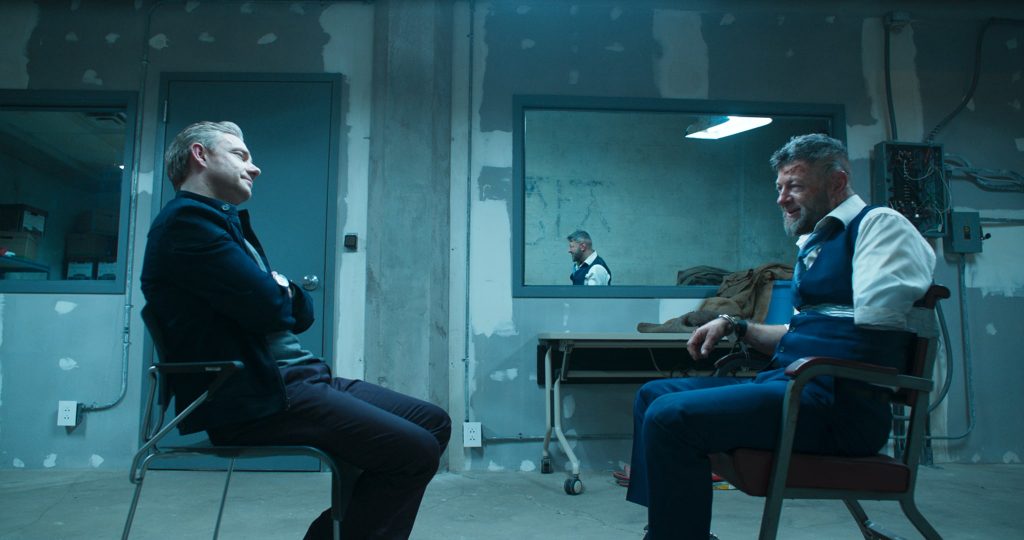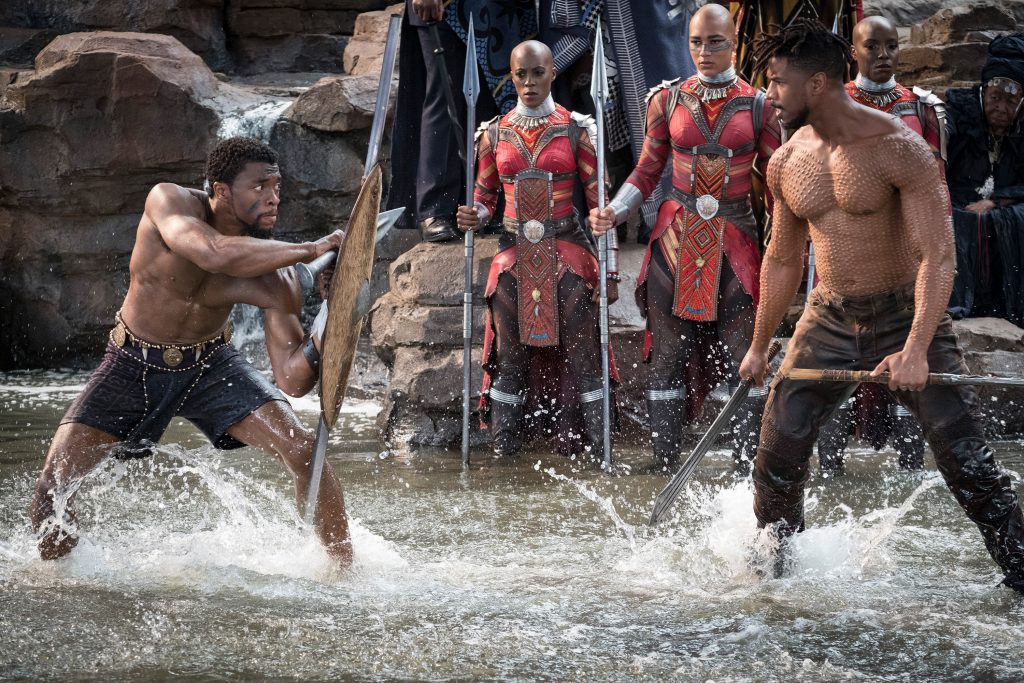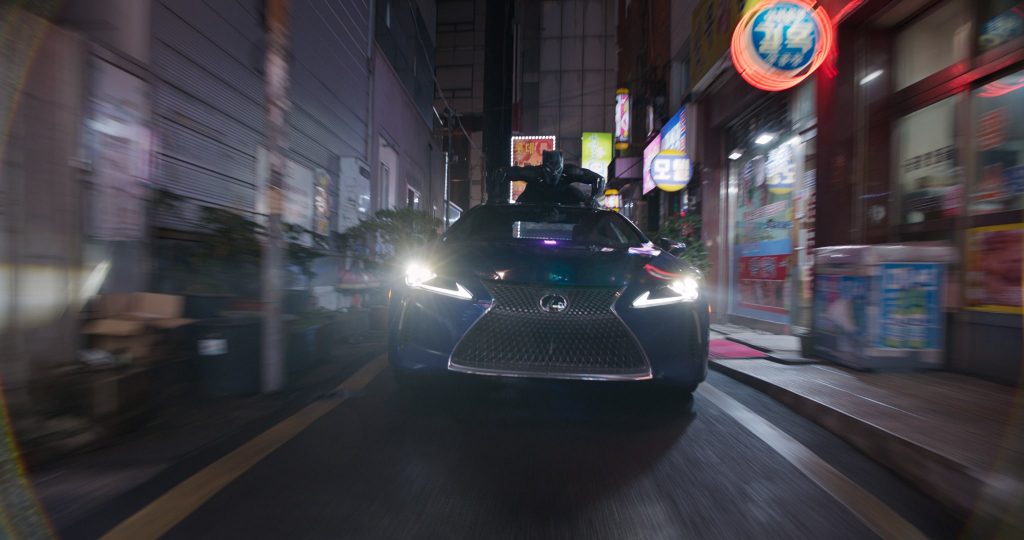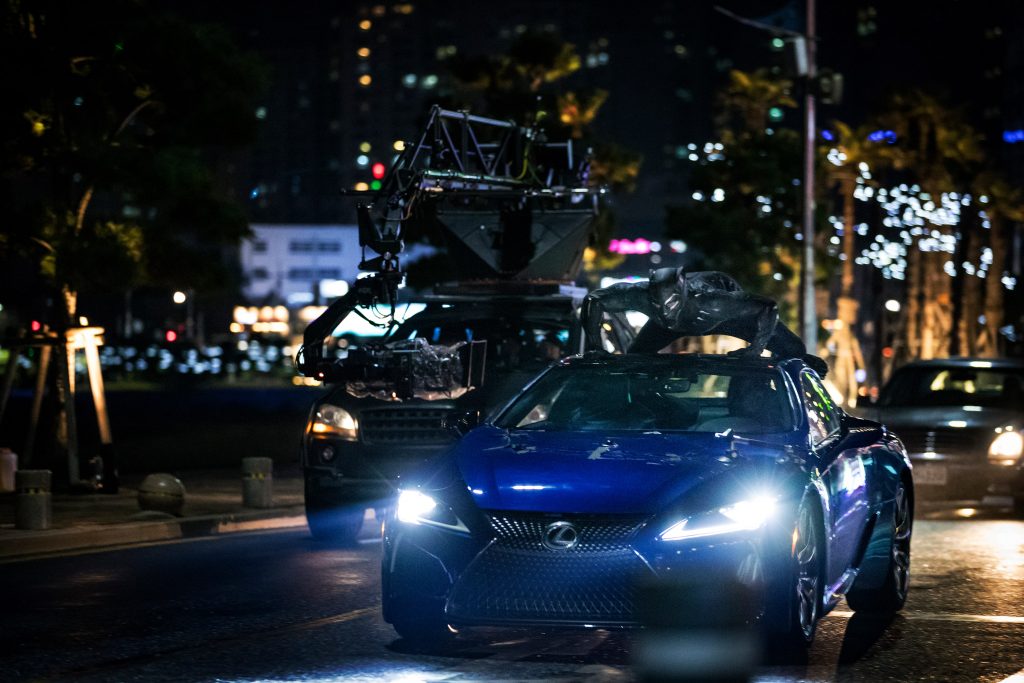Marvel has created an immense line-up of characters, both heroes and villains. Many have gone out in their own branded movie. The Black Panther was first introduced by Stan Lee and Jack Kirby as a lead black superhero in a mainstream comic back in 1966. Finally now Black Panther gets his story told.
We spoke with Bryan Grill at ScanlineVFX as post production on Black Panther was ‘going gang-busters’ through the Christmas break. “Marvel usually finds their movie during post,” Grill relates from Los Angeles. “They shoot their movie with one vision, and then by the end, the spectacle of the final product is created through post production and visual effects work. VFX gives them a lot more leeway in experimentation. When you’re out on set, it’s very important to get all your practical elements together. The story, main characters and stunts, but when it comes into post, it’s a different world and we can really use VFX to create their final results.”
Working with Marvel once again, Bryan Grill says he senses a freedom for his crew to do what they do best. “There’s the ability to suggest and come up with new ideas. Because Marvel do a lot of the previz in-house, they work very closely with the director and editor and they are already predetermining the way things are happening. If they are stuck on how to proceed on something, we can show how to make the shot more fantastical.”
One of the villains of the show is Ulysses Klaue, played by Andy Serkis. ScanlineVFX worked to digitally remove Klaue’s left arm, then add some cloth sim of that kind of shirt of a particular thick texture. Then to attach the false arm remnants. Originally, Klaue lost his arm in another of the Marvel franchise movies, Avengers: Age of Ultron. He had a false arm attached, a weaponised attachment, made from a fictional metal which features widely in Marvel comic stories, called vibranium.

Inside the London museum, Klaue shatters glass in a display case to steal some of the vibranium. Here, ScanlineVFX supplied some reference practical glass as well as more CG glass effects to accentuate the case being smashed open. Also added in was Klaue’s prosthetic arm and the glowing weapon arm. “Muzzle flashes and shattering display cases: nothing too crazy,” adds Grill.
Sonic Disruptor
The forces coming from Klaue’s Sonic Disruptor in his weaponised arm, ripple across the screen. This effect was designed in Houdini between a close-knit look development team at Luma Pictures, and all comped in NUKE. “This was quite an amorphous effect because it had to distort space,” says the VFX Supervisor at Luma Pictures in Melbourne, Brendan Seals. “But it still had to have light and color because color is a really important part of the visual language of Marvel films,” he adds.
“On Black Panther’s suit we have purple denoting the amassing and coalescing of kinetic energy, and the blue shades of the Sonic Disruptor railing through the cars, and this basically tears them wide apart. We ended up with various custom-designed, destroyed versions of the cars, with animation which triggers blend-shapes and high frequency debris and simulations on top. These were very elaborate destruction scenes designed in Houdini and each of these took up to six months to perfect.”
Animation
Marvel at all times wanted the animation to feel physically plausible, wherever possible. “Our Animation Supervisor Rafael A. Pimentel was very involved with the look of the character,” says Kevin Souls, the VFX Supervisor in LA for Luma Pictures. “As our assets were so photographically based, we had access to everything. We got in the plates early and we were ready to go right off the jump. Our sequences were fully virtual.”

Luma’s team was gathering insights into how the characters would fight, move, and jump. They did a series of motion capture sessions inhouse with the stunt performer doing parkour moves. In a chase sequence set in the Korean city of Busan, Black Panther does a reverse jump off a Four Runner van onto the Lexus car. That move was partially captured right there at Luma LA, then pushed into animation and modified to work in the scene.

Digital Cars
CG artists and compositors created full CG build-outs from two Lexus cars given to them by the car company. “We were also given two full CAD forms of the Lexus cars to start the work”, says VFX Supervisor Kevin Souls. “There were multiple digital versions of the same car, so they could have crashes and do various stunts with them and Luma could replace them or augment them when necessary.”
The on-set supervisor shot lots of great reference material for the Luma Pictures digital artists. There were photo-real takes of the Lexus in different environments and lots of other material. “We have great photography to match to in the different applied lighting environments, not just moving, but stationary as well,” says Seals. “The car was also shot in daylight, a really stable environment to work in. This provided great landscape to share internally with our look development team.”
“The cars are a massive geometric complexity. There’s the frame of the car, all the engine parts modeled individually so they can break apart and thousands of pieces can come flying out. Just having that data accessible to the lighter in a way that’s quick and responsive is for us a big step forward.”

There was also a bare, cut-down chase-car which was then loaded with 360-degree camera rigs set at different angles and heights. This Corvette was driven down the same roads where the huge sequences were staged. It spent the entire time collecting panoramas which are then painted and stitched onto those digital Lexus cars as reflections. “They were also great for referencing as set extensions,” adds Souls.
Luma Pictures also created a CG Toyota Four Runner, because there is an army of these chasing the Black Panther in one of the big sequences. So they were all captured in the same lighting conditions, and the cars were captured in the Busan environment. “Reference is king with these scenarios and the real lighting scenarios of Busan were able to be painted onto the cars,” adds Seals. “That was really most helpful. In terms of production, it’s been a very elaborate shoot.”
Luma Pictures: http://lumapictures.com
ScanlineVFX: http://www.scanlinevfx.com/index.html
Black Panther: http://marvel.com/movies/movie/224/black_panther
